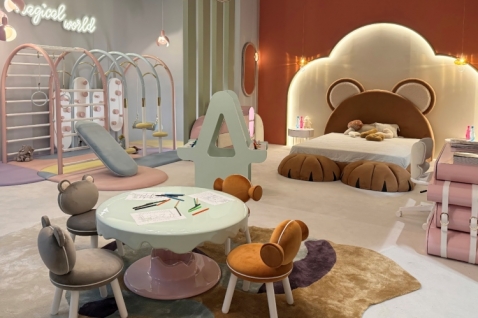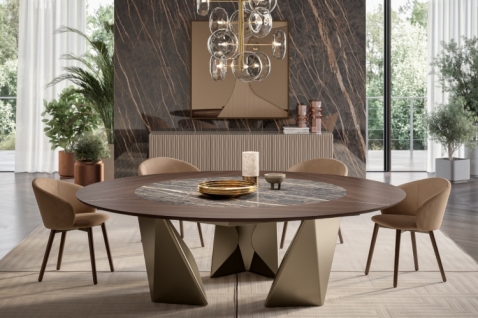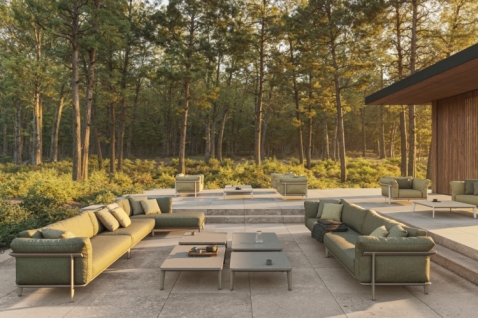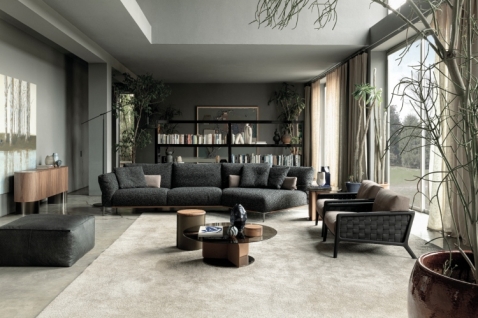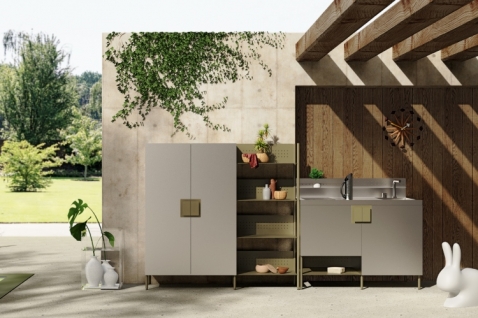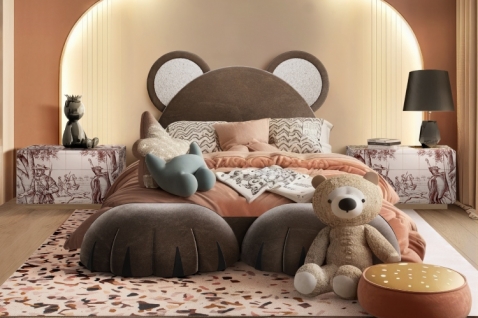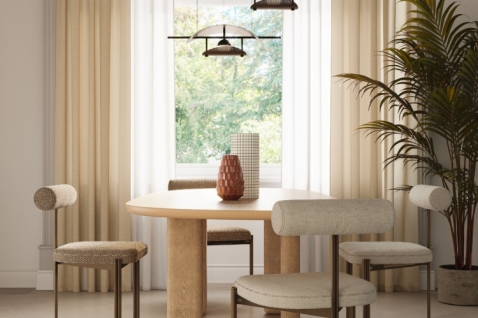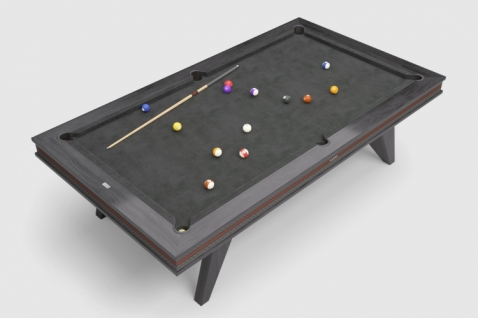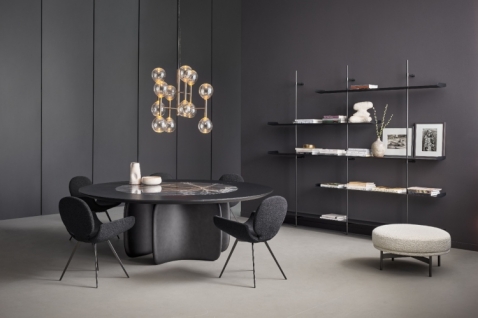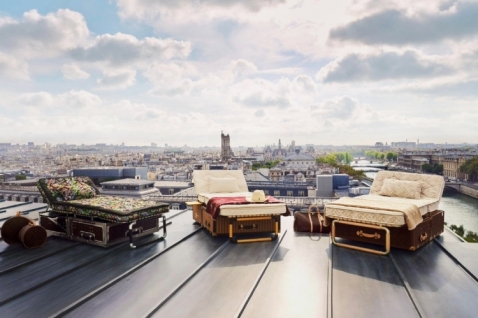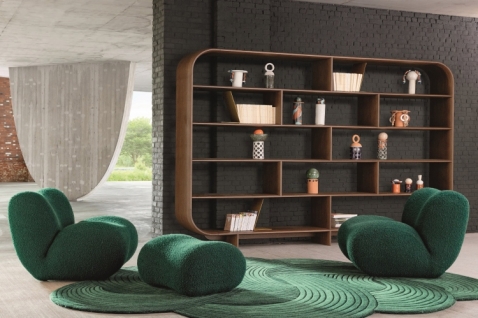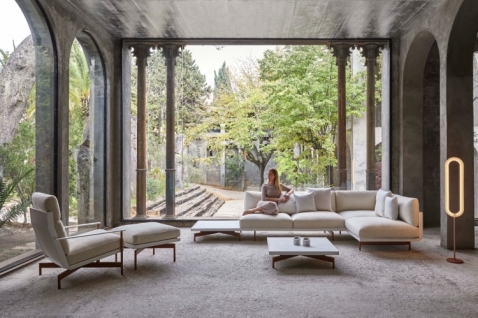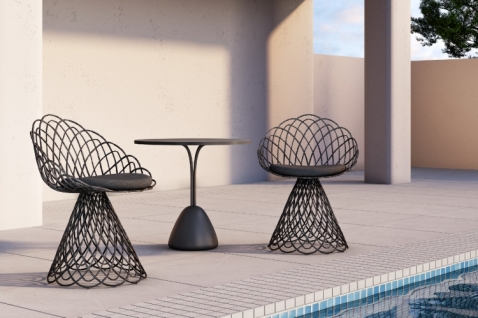Interiors by David Lynch. A Thinking Room @ Lombardini22

Through David Lynch's imagined and imaginative "rooms," symbolic gates which have to be entered in order to immerse oneself in the exhibition, the Salone del Mobile.Milano reaffirms the fact that interiors never have just a decorative or symbolic value, but can interact and breathe with those who live in them.
For its 62nd edition, the Salone del Mobile.Milano has chosen David Lynch, the director of films that channel the subconscious, to provide an original and metaphysical narration and reflection on the production of interiors and on how this is in a deep, sometimes symbiotic relationship with the interiority of those who buy these furnishings, not just for decorative reasons but because they are experienced as an external projection of the self. The upshot is a striking, visionary installation, and a sensory and narrative experience packed with emotion. Interiors by David Lynch. A Thinking Room (pavilions 5-7) reawakens our sense of wonder, punctuates memorable moments and, through the scenographic language of cinema and theatre, celebrates the design of a space.
.jpg) Antonio Monda @ Brigitte Lacombe
Antonio Monda @ Brigitte Lacombe
Antonio Monda, a friend of the filmmaker and curator of the project, tells us that Lynch loves to create furniture himself and that this is not so much the fruit of inspiration but of hard, precise manual work. On the other hand, the interiors in his films -and probably the furniture with which his studio is filled -are not simply settings, but a reflection of the state of mind of the protagonists, who live in a perennial and precarious state, hovering between anguish and tenderness, violence and pity, dream and nightmare. Just think of the total darkness of the house Bill Pullman enters in Lost Highway, the kitsch surroundings in which the diabolical Diane Ladd lives in Wild at Heart and Kyle MacLachlan's home in Blue Velvet, in which, below the idyllic surface, corruption and the mystery of evil are unveiled. Not to mention the places in which the protagonists of Twin Peaks work and seek out entertainment, in which anxiety and alienation do nothing to satisfy a yearning for peace and serenity. In his work, each interior is a character with a life of its own, which is up to the viewer to work out.
The Thinking Room is therefore far more than just a room, as unfathomable as every soul and as mysterious as the relationship between reason and fantasy. It's a place in which every impulse, every spasm, every hope finds a moment of reflection, possibly of stillness, even, because with Lynch nothing is certain or definitive, and nothing is as one might imagine, starting with the sculptural geometry of the large wooden chair -which dominates the centre of the design space -the seven gilded cylinders, the vaulted ceiling with metal tubes and apertures onto the outside, be they windows or simple screens. It's certainly no coincidence that this room devoted to thinking is encased in blue velvet.
Maria Porro, President of the Salone del Mobile.Milano added: "We have chosen to work with a Master of film such as David Lynch because of his ability to transport us into a mysterious and disturbing different world. Entering his Thinking Room will be like crossing the threshold of a room that is, in fact, another world, an inner space. After all, what are design, and furnishing in particular, if not a quest for and creation -through design, function and materials -of objects that furnish a home, or even just a room, that subconsciously make us feel safe?"
.jpg) David Lynch @ Dean Hurley
David Lynch @ Dean Hurley
Lombardini22, a leading group on the Italian architecture and engineering scene, designed the masterplan for the positioning and the architectural footprint of the curved perimeter leading to David Lynch's work. What Lombardini22 has designed is a "treasure box for a diamond" -a technical and layout project -devised in such a way that the great American filmmaker's installation is clear, impactful and consistent with the other areas and with the event. The curved perimeter consists of a burgundy-coloured curtain that leads to the 50m2 area given over to David Lynch's piece. The project was carried out in collaboration with scenographers from the Piccolo Teatro di Milano, who translated David Lynch's fascinating imagery and artistic thinking into a material reality, creating his Thinking Room. By harnessing a work process that unfolded dynamically in different directions and in different phases, bringing the technical/operational and creative plans together, the Piccolo Teatro has given shape to the instructions and vision of the brilliant film director who conceived the immersive "thinking room" experience.


